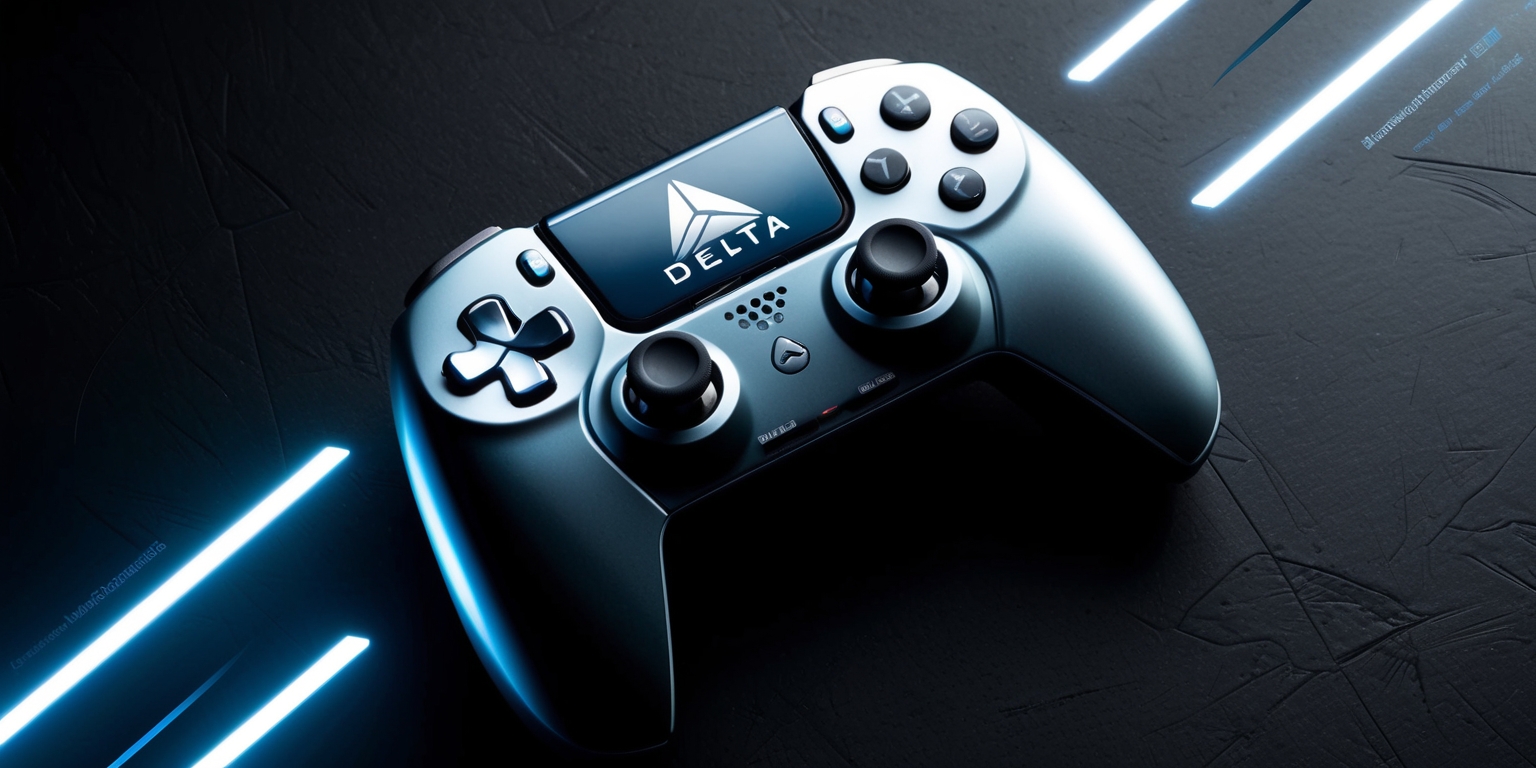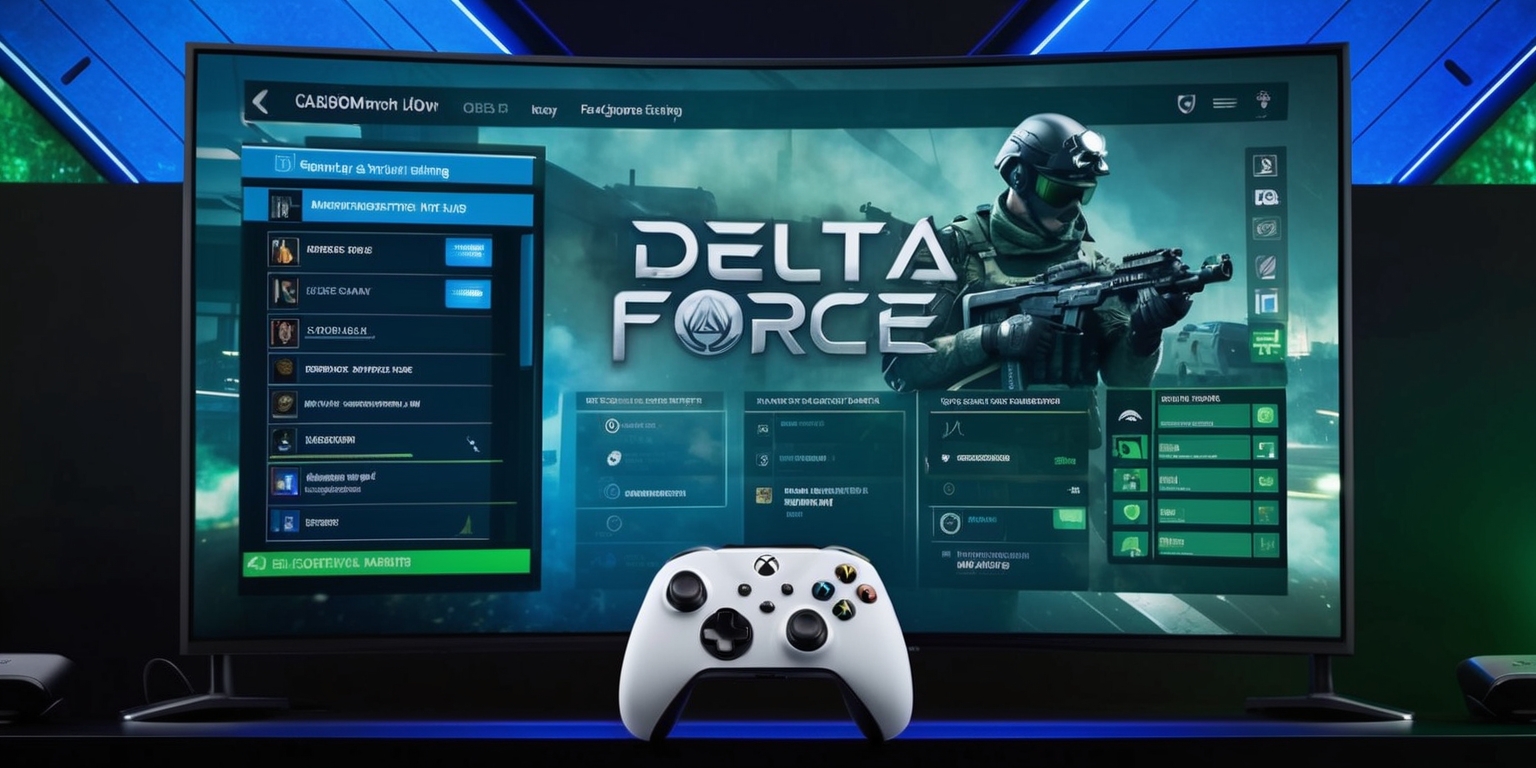
Delta Force has evolved rapidly since its early days as a PC and mobile shooter, offering a fresh and accessible experience on modern Next-generation gaming systems such as Microsoft's Xbox Series X/S and Sony's PlayStation 5 offer players cutting-edge performance now find themselves immersed in a free-to-play environment that seamlessly blends classic shooter elements with innovative technical adjustments. The ability to switch between controller modes and adjust sensitivity for a variety of gameplay nuances makes the experience both flexible and challenging. Amid a backdrop of robust cross-play and a growing roster of class-based operators, the game invites users to refine their approach to movement, aiming, and overall control. This transformation highlights the importance of optimizing every setting to match your ideal play style and elevate your performance in combat scenarios.
Controller Performance and Tuning
As players transition from PC or mobile systems, the controller performance in Delta Force requires careful attention to detail. The game’s conversion for console demands that users fine-tune controller sensitivity to navigate complex combat environments effectively. Adjustments such as the right stick center deadzone set to 10 and a maximum input of 80 play a pivotal factor in delivering a seamless gaming experience experience. These settings ensure that movements are precise, and responsiveness is maintained even during rapid actions. Beyond the basics, fine-tuning stick response curves and sensitivity presets can help balance the difference between hip fire and ADS engagement. Players can enjoy a more tailored experience by determining what feels natural through trial and error. This balance makes the transition from familiar shooter experiences to Delta Force both exciting and demanding.
Understanding Deadzones and Input Sensitivity
One of the core elements to mastering Delta Force is the understanding and adjustment of controller deadzones and input sensitivity. The game offers a range of adjustments that allow for the fine calibration of the left and right sticks to create a response curve suited to individual play styles. Setting a deadzone ensures that small unintended movements are filtered out, while the maximum input settings give players a sense of control precision. This calibration is critical when transitioning from aggressive combat movements to more delicate aiming while in ADS mode. Experimentation with these settings, such as testing different sensitivity parameters, helps players achieve consistent control during heated encounters. A keen focus on These parameters not only optimize performance but also deliver additional benefits improves overall enjoyment and comfort during long play sessions.
Precision in Aiming Configuration
Refining aiming mechanics is essential for competitive gameplay in Delta Force, where precision is paramount. The game distinguishes between hip fire sensitivity and ADS sensitivity, allowing players to adjust horizontal and vertical parameters separately. Horizontal sensitivity might be elevated near 450 for hip fire, while ADS settings are typically reduced to around 200 horizontally, ensuring more precise targeting. Notably, the game includes specialized settings such as outer deadzone acceleration and turning activation times that further refine the input responsiveness, adding layers of customization for each play scenario. These settings offer granular control, allowing players to be as aggressive or careful as they need to be, ultimately influencing in-game tactical decisions. The depth of these settings means that even minor Modifications have the potential to substantially enhance gameplay performance and overall tactical accuracy.
Customizing Sensitivities for Multiple Scenarios

Delta Force offers a robust system for separating sensitivity settings across different play modes and perspectives, Incorporating both first-person and third-person perspectives guarantees that players consistently enjoy a seamless gaming experience whether they are engaging enemies at close range or scanning a broader field from a distance. The default configurations typically provide a baseline of 400 horizontal sensitivity for first-person mode and slightly lower values for third-person gameplay. For those piloting aircraft or operating ground vehicles, similar sensitivity settings apply to maintain a consistent response behavior. Even though many players might choose not to engage with all types of vehicles, the option to adjust these values underscores Delta Force’s versatility. By tailoring sensitivity settings not just for operator controls but also for various vehicle operations, The game is designed to appeal to a broad spectrum of users gameplay styles.
Adaptive Controller Layout and Movement Controls
The customizable controller layout in Delta Force empowers players to arrange their buttons and triggers in a configuration that best suits their combat style. Whether you prefer using bottom triggers for shooting or find top bumpers more natural, these settings contribute to a more fluid gameplay experience. Options to swap core functions such as crouching and melee provide further personalization, allowing for quicker transitions between tactical movements. Additionally, features such as Auto Run or Tactical Sprint give players the flexibility to manage their movement speed, with options that cater to both aggressive engagements and stealthy navigations. The ability to customize these control elements means that every user can design a layout that minimizes distractions and maximizes responsiveness. This attention to detail in controller mappings often makes the difference in critical in-game situations, enhancing both comfort and effectiveness.
Optimizing Screen Display and In-Game Visuals
Screen settings in Delta Force are not merely about aesthetics; they play a strategic role in gameplay. Players can adjust various parameters to suit their hardware capabilities and personal visual preferences. Options such as disabling V-Sync to focus on performance mode and frame rates can drastically improve how the game responds during intense combat moments. Gamers can enhance their situational awareness by tweaking the default field of view (FOV) to a range between 100 to 120, providing a broader perspective that can be crucial during engagements. Additional customizations in the display settings, like brightness adjustments and performance parameters, ensure that the visuals are crisp, reducing the chance of misjudging enemy positions. These visual refinements ensure that every detail on the screen contributes to a competitive edge during gameplay.
Enhancing Graphical Experience and Combat Perspective
Graphical settings in Delta Force are designed to provide players with both visual appeal and performance efficiency. For many gamers, the option to choose a performance mode over higher graphic fidelity means prioritizing frame rates, which is essential for a shooter game where every fleeting moment is critical. This approach also ensures that the combat perspective remains clear, with minimal lag or visual interference during fast-paced skirmishes. The game allows players to tailor the brightness levels and graphic details to align with their hardware's capabilities. Adjustments such as these help maintain an optimal balance, ensuring that the environment is immersive without compromising the reaction time. Whether you are in a firefight or navigating through complex in-game terrains, these customizable visual settings ensure that the gameplay experience is both engaging and competitive.
Audio Adjustments and Communication Clarity
Audio settings in Delta Force are designed to enhance both individual gameplay and team communication. For those who prefer a quieter yet effective soundscape, reducing the master volume to 60 can help prevent important in-game cues from being overwhelmed by background effects. Music volume is typically set lower than sound effects and UI alerts, ensuring that critical sounds retain their impact during gameplay. In a fast-paced shooter, clear audio can be the difference between reacting correctly or missing vital cues. Features like switching to preferred chat channels, adjusting voice volume, or muting when the game is minimized help maintain clear communications during extended sessions. Delta Force’s audio setup is highly customizable, letting players determine the perfect balance between immersive soundscapes and tactical audio clarity, tailor-made for precise in-game awareness.
Integrating Cross-Platform and Operator Dynamics
Delta Force embraces a diverse player base with its cross-play functionality, which allows users on different platforms to connect and compete. This system is designed with careful control, ensuring that while players can enjoy cross-play, limitations may exist depending on your chosen platform. The game also boasts a roster of 11 unique class-based Operators, each boasting a unique set of skills and specialties, and settings. Players can unlock and utilize these operators by adjusting their controls and sensitivities, ranging from standard movements to specialized operations involving various vehicles. The rich dynamic between class-based operator customization and cross-platform interactions makes Delta Force an adaptable experience. By utilizing detailed settings for each class and platform, gamers can experience a fluid transition between different modes of play, ensuring a well-rounded and inclusive competitive environment.
Fine-Tuning In-Vehicle and Aerial Dynamics
In addition to infantry combat, Delta Force provides detailed settings for operating vehicles and aircraft, allowing commanders a unique blend of ground and aerial strategies. The system offers specific sensitivity adjustments for ground vehicles and tanks, for example, enabling players to set vertical and horizontal sensitivities similar to operator settings. Although some users may prefer to focus solely on ground combat, the inclusion of aerial and vehicle dynamically tailored controls adds depth to the game. Settings tailored for aircraft and gunner roles are available, ensuring that those who choose to operate these platforms receive a customized experience without compromising on precision. Each sensitivity metric is carefully calibrated to balance the distinct mechanics between infantry and vehicle controls, thereby ensuring that a player's performance remains consistently competitive across all aspects of gameplay.
Exploring Advanced Game Features and Tactical Options
Beyond the core adjustments in sensitivity and control, Delta Force presents an array of advanced settings designed to refine the tactical edge for seasoned players. These configurations include options for adjusting the input response curves, setting specific parameters for scope magnification, and even toggling adaptive trigger effects on PS5 controllers. Specific values such as first-person vertical sensitivity and the option to disable adaptive triggers allow players to streamline their combat workflow. The game also includes distinct settings for slide and dive maneuvers, empowering players with the flexibility to alter movement tactics on the fly. This symmetry between innovative technology and traditional shooter dynamics is reflective of Delta Force’s commitment to accommodating a variety of gameplay styles, ensuring that both newcomers and veterans can fine-tune the experience to match their tactical ambitions without compromising authenticity.